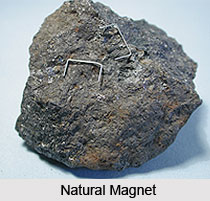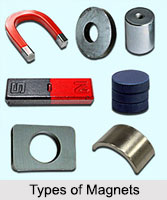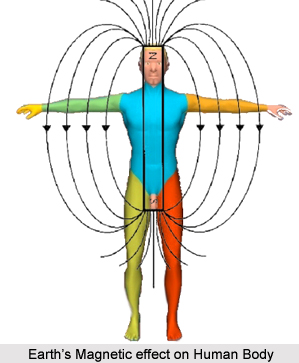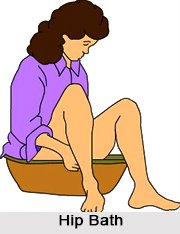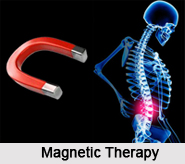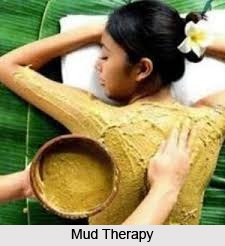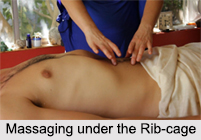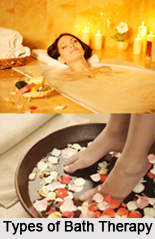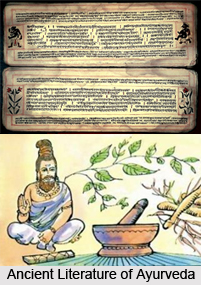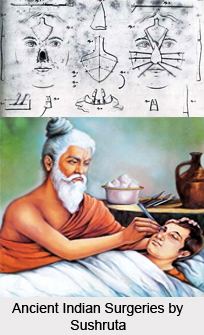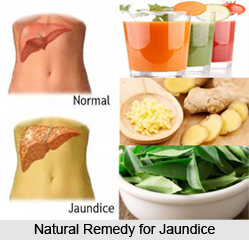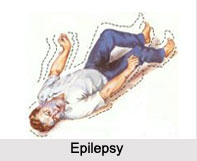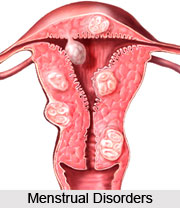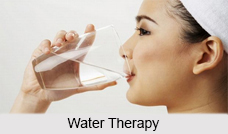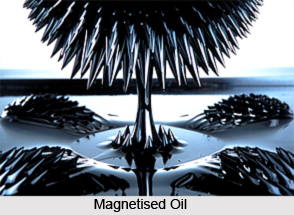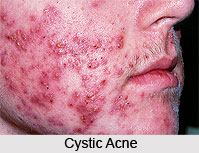 Several types of boils have been identified so far that develop in human body. However, there are only four or five types of boils, found to be common in medical history. These types include the Furuncles or Carbuncle; the Hidradenitis Supparativa; the Cystic Acne; the Pilonidal Cysts; etc. The boils develop in different parts of the body. One common thing in all the boils is that, these begin as a red mark and then grow in size and when the body tries to fight them, they fill with pus.
Several types of boils have been identified so far that develop in human body. However, there are only four or five types of boils, found to be common in medical history. These types include the Furuncles or Carbuncle; the Hidradenitis Supparativa; the Cystic Acne; the Pilonidal Cysts; etc. The boils develop in different parts of the body. One common thing in all the boils is that, these begin as a red mark and then grow in size and when the body tries to fight them, they fill with pus.
The Furuncles or Carbuncles is a common type of boils. The Furuncles are mainly caused by an infection of the hair follicle by the bacterium, named Staphylococcus aureus. Some disposing factors like an infected wound, poor hygiene, debilitation, diabetes, alcoholism, occlusive cosmetics, are the main causes behind the occurrence of Furuncles.
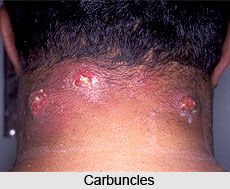 Wearing tight clothes, friction, chafing, exposure to chemicals, and treatment for skin lesions with tar or with occlusive therapy, using steroids, can also help in the development of Furuncles. The Furuncles usually appear on the face, neck, thighs, armpits or buttocks and are less commonly found in the body organs like nose or ear. In some cases, Furuncles may be accompanied by fever and chills.
Wearing tight clothes, friction, chafing, exposure to chemicals, and treatment for skin lesions with tar or with occlusive therapy, using steroids, can also help in the development of Furuncles. The Furuncles usually appear on the face, neck, thighs, armpits or buttocks and are less commonly found in the body organs like nose or ear. In some cases, Furuncles may be accompanied by fever and chills.
A later stage of the Furuncles is the Carbuncles, which tend to grow in clusters. Generally Carbuncles occur on the back of a person`s neck, hips, thighs, or shoulders. Carbuncles usually tend to last longer than all other boils, as they result from a deeper infection. The Hidradenitis Supparativa is another type of boil that can become quite painful. This type of boils usually affects the underarm and groin areas. These boils occur when sweat glands inflame and become infected. Sometimes it requires surgical intervention to remove the sweat glands, affected by Hidradenitis Supparativa.
Another type of boils is Cystic Acne. Usually, excess oil production can trap dirt and bacteria under the skin and this in turn, may cause a cyst. 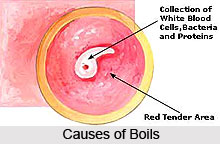 The main difference between the Cystic Acne and the Common Acne (or pimples) is that, the former affects deeper levels of skin tissue. The teenagers, mostly, face problems with cystic acne. Another type of boils that affects mostly the adolescence is the Pilonidal Cysts. These boils are one of the comparatively less common types of boils. These boils often drain spontaneously. Here, the inflamed area enlarges over time and becomes a firm, painful, tender nodule, due to irritation caused by direct pressure. The Pilonidal Cysts are usually recurrent and can occur monthly.
The main difference between the Cystic Acne and the Common Acne (or pimples) is that, the former affects deeper levels of skin tissue. The teenagers, mostly, face problems with cystic acne. Another type of boils that affects mostly the adolescence is the Pilonidal Cysts. These boils are one of the comparatively less common types of boils. These boils often drain spontaneously. Here, the inflamed area enlarges over time and becomes a firm, painful, tender nodule, due to irritation caused by direct pressure. The Pilonidal Cysts are usually recurrent and can occur monthly.
The various types of boils are mainly treated through various treatment methods like Homoeopathic, Ayurvedic, Naturopathy, etc. Different kinds of home remedies are also used for treating boils.





